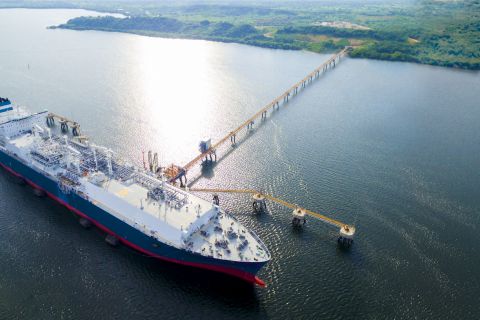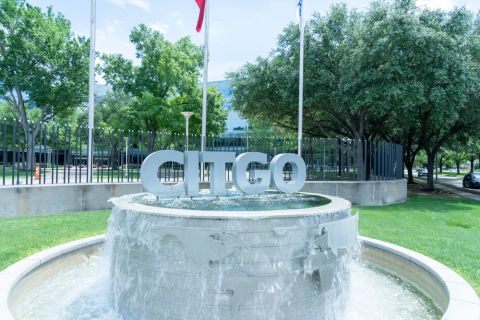
In the past chemical EOR was not the method of choice to boost recovery rates for aging oil fields, considering the high cost of chemicals, insufficient knowledge of a given chemical’s behavior in reservoirs, unknown recovery factors and failed projects.
But the method is gaining momentum thanks to improved chemical formulations and lower costs, advances in laboratory analysis, higher oil prices that make chemical EOR more economically viable and its potential to boost recovery rates to as high as 70%, according to a report released by Lux Research, which tracked 135 projects in search of trends in the chemical EOR market.
“Chemical EOR still only accounts for [1/10] of global production from EOR today but is applicable in many fields that are incompatible with other forms of EOR,” Daniel Choi, Lux Research analyst and the report’s lead author, said in a prepared statement. “Besides, changes in the market and improvements to the chemical EOR process have allowed projects once considered uneconomical to now be viable.”
The report’s release comes as the number of new discoveries worldwide falls and oil and gas companies look for ways to expand the life spans of mature fields, while also increasing recovery rates at other fields. The report pointed out that the cost for producers to replace a barrel has risen from $6 per barrel in 1998 to $28 per barrel in 2012.
But each chemical EOR method has its drawbacks and advantages, with each chemical, or combination of chemicals, being tapped for various objectives. Polymers such as guar gum and hydrolyzed polyacrylamide, for example, increase the viscosity of waterfloods, reduce the flood’s mobility and fingering, and increase sweep efficiency, the report noted. Polymers are the most utilized, most mature and least expensive chemical EOR method; however, they have the lowest recovery factor—about 5% of original oil in place (OOIP).
Researchers called surfactant polymer floods an attractive option, with an improved recovery factor of about 20% of OOIP. Surfactants reduce tension between oil and water, enabling the release of oil that would otherwise be trapped. Certain types of surfactants also have higher temperature and salt tolerances. However, surfactants are more expensive than polymer floods, and researchers said that reservoirs adsorb surfactants, which can complicate floods using this type of chemical.
Alkaline chemicals react with acidic moieties in oil to produce surfactants in situ; the surfactants then reduce the interfacial tension between oil and rock, the report continued. By weight, these chemicals’ costs are between 5% and 50% of surfactants. “While less expensive than surfactants, [alkaline surfactant polymer] floods are only applicable to reservoirs containing oil with high concentration of acidic moieties [that are] able to produce enough surfactants downhole to overcome the capillary forces trapping the oil. Softening the injection water is also critical to minimize ion exchange and not damage the reservoir.”
Researchers—who evaluated each method on five parameters that included cost, recovery factor, maturity, durability and momentum—concluded that there is no best chemical EOR method.
“ASP [alkaline surfactant polymer] floods are the frontrunner but [are] no magic bullet. Each reservoir is unique, requiring years of laboratory analysis and field pilots before a project is ready for full-field implementation,” Lux said. “Consequently, feasibility is a key determinant of the method employed, and there is no ‘best’ chemical EOR method. Still, ASP floods are gaining momentum due to their high recovery—~25% of OOIP—and relatively low cost.”
Despite the overall low use of chemical EOR compared to other EOR methods, some parts of the world are leading the effort in terms of both pilot projects and full-field projects. In both instances, North America—specifically the U.S. and Canada—dominates the chemical EOR market, followed by Asia where China is home to the world’s largest polymer and second largest polymer floods in the Daqing and Shengli fields, the report said.
North America and Asia account for 76% of field pilots and 96% of full field projects since 1985, according to the report.
But other regions have tested the method. These include the Middle East, where Petroleum Development Oman’s Marmul Field underwent a full-field polymer flood in 2010. Hopes were to raise the total percentage of oil recovered from initial estimates of about 10% to 20% to the high 20s or low 30s, according to the company’s website. But the project was shelved because discoveries in Oman had cheaper extraction costs.
“However, today’s economic conditions make the increased unit cost of the various EOR techniques more feasible,” PDO said on its website. “The most significant aspect of the Marmul project is the way it has helped to usher in a new, smarter way for PDO to manage its oil fields. The key to a successful enhanced oil recovery strategy is maintaining a good flow of accurate data on the oil field, so each well will be able to accommodate measuring and logging equipment to monitor the flow into the production wells, as well as constantly checking the quality of the polymers being used. This more focused reservoir management strategy is something that PDO hopes to implement across all its fields, not just those earmarked for future EOR projects.”
The report pointed out several major chemical EOR projects to continue watching. These include Total’s polymer-viscosified waterflooding EOR project in the Dalia Field offshore Angola in deepwater and Petronas’ full-field ASP project in Angsi Field offshore Malaysia set for 2016.
Contact the author, Velda Addison, at vaddison@hartenergy.com.
Recommended Reading
Glenfarne: Latest Customer Means Texas LNG is Ready for FID
2024-09-12 - Construction on Glenfarne’s Texas LNG is scheduled to begin this year, though the project is one of two LNG sites that had permits pulled after a court ruling in August.
FTC Oks Chevron-Hess Deal, Bans John Hess from Board
2024-09-30 - Federal regulators signed off on a blockbuster tie-up between Chevron and Hess Corp. but banned CEO John Hess from sitting on the Chevron board.
Venezuela Lost Citgo, But the Battle’s Not Over Yet
2024-10-04 - Amber Energy’s $7.3 billion purchase of Citgo fell well short of analyst’s valuations. PDVSA Ad Hoc expects to appeal the decision soon in its battle to protect its claim on Citgo.
Quantum Teams Looking for Acquisitions ‘Off the Beaten Path’
2024-10-14 - Blake Webster, partner at Quantum Capital Group, said the private-equity firm’s portfolio teams are looking to buy from sellers looking for cash buyouts, though not necessarily in the usual places.
Diamondback Subsidiary Viper Closes $900MM Midland Royalty Deal
2024-10-02 - Diamondback Energy’s Viper Energy closed the last of three acquisitions from Tumbleweed Royalty, owned by Double Eagle Energy’s founders, that together totaled about $1.1 billion.
Comments
Add new comment
This conversation is moderated according to Hart Energy community rules. Please read the rules before joining the discussion. If you’re experiencing any technical problems, please contact our customer care team.





